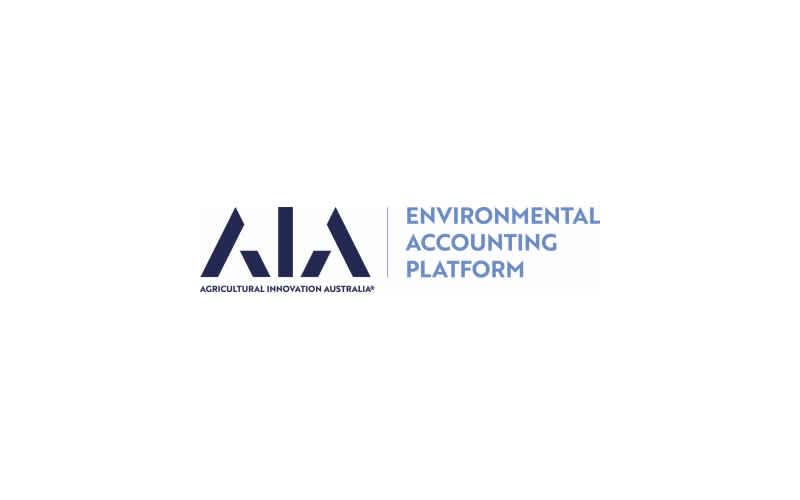80 million reasons to be excited about the AIA EAP
29-Apr-2024Following a successful beta-period and the completion of an independent impact assessment, Australia’s first definitive cross-sectoral carbon calculation engine for the agriculture, fisheries and forestry sectors is being readied for launch.

The AIA Environmental Accounting Platform (AIA EAP) will be made live in early May, delivering a standardised approach to carbon accounting across a wide range of commodities.
A recent independent impact evaluation of the AIA EAP, carried out by Marsden Jacob Associates, has shown that there are significant benefits for Australian agriculture, fisheries and forestry sectors. Their evaluation showed that the research, development and maintenance of a single, common platform provides to stakeholders net benefits of close to $84 million and a benefit to cost ratio of close to 17:1.
The evaluation also showed that a single, common platform such as the AIA EAP is around 11 times more cost effective for rural industries than the development and maintenance of individual, commodity specific calculators, representing a saving of more than $50 million.
AIA CEO Sam Brown said the EAP is a national-scale, pre-competitive solution, which will provide an accessible, reliable and consistent reference point to support supply chains with a better understanding of agricultural emissions.
“When it comes to carbon accounting, it is clear there are significant benefits to developing, updating and maintaining a single common platform that works across commodities, particularly for mixed farm enterprises, which represent a high proportion of our primary production landscape,” Mr Brown said.
“As a not-for-profit, we are creating a single source of truth, backed by science, so producers and other providers can reduce administration by entering their data just once to achieve a whole of enterprise carbon footprint.
“There are also efficiency benefits for participating rural Research and Development Corporations (RDCs) by reducing duplication of common updates and refinements, and for third party users looking to avoid costly workarounds on multiple platforms.
“We know that one of the biggest barriers to carbon accounting has been the complex, time consuming and confusing nature of current default methods for measurement.
“The AIA EAP will change that, while at the same time providing data and evidence to empower users to make informed decisions around reducing emissions, capture new business opportunities and help drive positive environmental and economic outcomes for Australia.”
The AIA EAP provides universal access to carbon calculators that are consistent with the most widely used and current de-facto standard, the University of Melbourne’s Primary Industry Climate Challenges Centre Greenhouse Accounting Frameworks for Australian Primary Industries (GAF Tools).
Chair of the AIA EAP Technical Advisory Panel and Director of the Primary Industries Climate Challenges Centre within the University of Melbourne, Professor Richard Eckard, said the overall objective of the EAP was to provide Australia with a common and standardised way for producers and their industries to calculate their carbon footprint and make more informed decisions.
“The independent impact evaluation completed by Marsden Jacob Associates found key benefits of the platform include reducing cost for both RDCs and third-party users by eliminating duplication of common refinements and removing the need for costly expenditure to find workarounds for inconsistencies and gaps across multiple platforms.
“The completion of the beta period and the independent impact evaluation mark a really important step forward for the AIA EAP and confirms it has the potential to transform the way we carry out carbon accounting across our rural industries.”
As Sam Brown explains, the AIA EAP is a national-scale solution, making it a reliable and consistent reference point to support the entire supply chain with understanding agricultural emissions.
“Having a carbon calculation engine that delivers a common methodology and supports a united narrative around emissions and emissions reduction will put Australia ahead of the rest of the world when it comes to carbon accounting,” Mr Brown said.
“We encourage the supply chain, farm and business solution providers, agribusiness, financial institutions and others to integrate with the engine, and build it into their own service offerings.”
“This evaluation by Marsden Jacob Associates shows the value of cross-sectoral investment in whole of agriculture solutions and clearly demonstrates the potential of AIA’s collaborative approach.”
“On behalf of our rural and regional industries, and the communities that service those industries, we couldn’t be more excited about the impending launch of the AIA EAP.” The AIA EAP has been built by AIA with investment from several of Australia’s rural Research and Development Corporations including Grains Research and Development Corporation, Meat & Livestock Australia, Australian Eggs, Australian Pork Limited, AgriFutures Australia, Cotton Research and Development Corporation, Fisheries Research and Development Corporation and the Australian Meat Processor Corporation.

